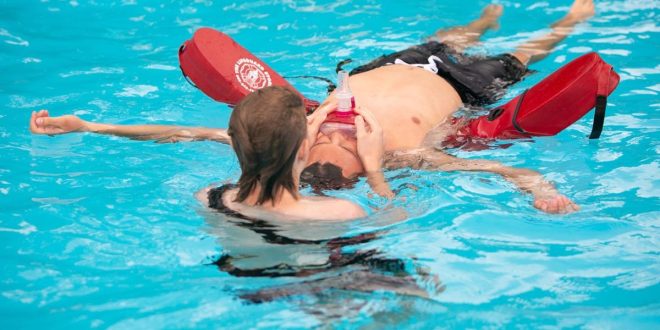Lifeguarding is not just a job; it’s a responsibility that can mean the difference between life and death. Whether at a pool, beach, or water park, lifeguards are the first line of defense against accidents and emergencies in aquatic environments. The purpose of lifeguard training is to prepare individuals for this critical role, equipping them with the skills, knowledge, and confidence necessary to keep swimmers safe and respond effectively in emergencies.
The Core Purpose of Lifeguard Training
The primary purpose of lifeguard training is to prepare individuals to prevent, recognize, and respond to emergencies in and around water. This training is essential because lifeguards are tasked with maintaining the safety of all swimmers, which requires a deep understanding of water safety principles, rescue techniques, and emergency response protocols.
Lifeguard training programs are designed to address a wide range of scenarios that lifeguards may encounter on the job. From preventing accidents through vigilant surveillance to executing complex rescue operations, lifeguard training ensures that individuals are ready to handle any situation that may arise in an aquatic environment.
Key Objectives of Lifeguard Training
- Prevention of Accidents and Injuries: One of the most critical aspects of lifeguard training is learning how to prevent accidents before they happen. This involves understanding how to maintain constant surveillance, identify potential hazards, and take proactive measures to ensure the safety of all swimmers. Lifeguards are trained to be highly observant, spotting signs of distress or danger early on and intervening before a situation escalates.
- Mastery of Rescue Techniques: In the event that an emergency does occur, lifeguards must be ready to act quickly and effectively. Lifeguard training teaches a variety of rescue techniques, including reaching assists, throwing assists, and in-water rescues. These techniques are practiced extensively during training to ensure that lifeguards can perform them confidently and correctly in real-life situations.
- Emergency Response and First Aid: Lifeguards are often the first responders in emergencies, which means they need to be proficient in providing immediate care. Lifeguard training includes comprehensive instruction in CPR, first aid, and the use of automated external defibrillators (AEDs). This training is crucial for stabilizing victims until more advanced medical help arrives.
- Effective Communication and Teamwork: Lifeguards rarely work alone; they are typically part of a team that must communicate and coordinate effectively to manage safety in aquatic environments. Lifeguard training emphasizes the importance of clear communication, both with other lifeguards and with the public. It also teaches lifeguards how to work together during emergency situations, ensuring a coordinated and efficient response.
- Understanding Water Safety Regulations: Lifeguards must be knowledgeable about the rules and regulations governing the aquatic facilities where they work. Lifeguard training covers these regulations in detail, ensuring that lifeguards understand the legal and safety standards they are expected to uphold. This knowledge helps lifeguards enforce rules effectively, contributing to a safer environment for everyone.
Also read about: Enroll in a Lifeguard Course and ALA Swimming Pool
The Importance of Ongoing Training and Recertification
While initial lifeguard training is crucial, it’s equally important for lifeguards to engage in ongoing training and recertification. The skills and knowledge required to be an effective lifeguard can diminish over time without regular practice and review. Recertification courses provide lifeguards with the opportunity to refresh their skills, learn new techniques, and stay up-to-date with the latest advancements in water safety and emergency response.
Ongoing training also helps lifeguards maintain their physical fitness, which is essential for performing rescues and other physically demanding tasks. Lifeguard training programs often include rigorous physical conditioning components to ensure that lifeguards are in peak condition and able to perform their duties effectively.
Conclusion
The purpose of lifeguard training extends far beyond simply obtaining a certification. It’s about preparing individuals to take on a role that carries significant responsibility and requires a high level of skill and vigilance. Lifeguard training equips participants with the tools they need to prevent accidents, respond to emergencies, and ensure the safety of swimmers in all types of aquatic environments.
By understanding the purpose of lifeguard training, it becomes clear why this preparation is so essential. Lifeguards are entrusted with the safety and well-being of others, and their training ensures they are ready to meet this challenge with confidence and competence. Whether you’re considering a career in lifeguarding or simply want to appreciate the dedication that goes into this vital role, recognizing the importance of lifeguard training is key to understanding the broader mission of water safety.
Also read about: Make a Splash with American Lifeguard Class
 Diverse Perspectives: Insights & Stories Exploring Ideas, Sharing Knowledge
Diverse Perspectives: Insights & Stories Exploring Ideas, Sharing Knowledge





